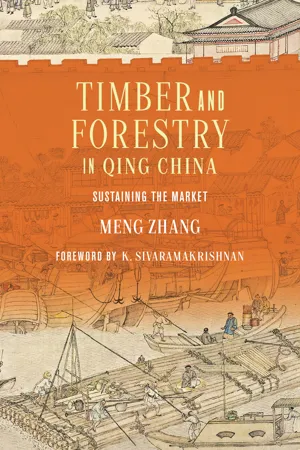
Timber and Forestry in Qing China
Sustaining the Market
Meng Zhang, K. Sivaramakrishnan
- 280 pagine
- English
- ePUB (disponibile sull'app)
- Disponibile su iOS e Android
Timber and Forestry in Qing China
Sustaining the Market
Meng Zhang, K. Sivaramakrishnan
Informazioni sul libro
Honorable Mention for the 2022 ISCLH First Biennial Book Prize, sponsored by the International Society for Chinese Law and History Traces the sourcing of logs that fueled early modern urbanization In the Qing period (1644–1912), China's population tripled, and the flurry of new development generated unprecedented demand for timber. Standard environmental histories have often depicted this as an era of reckless deforestation, akin to the resource misuse that devastated European forests at the same time. This comprehensive new study shows that the reality was more complex: as old-growth forests were cut down, new economic arrangements emerged to develop renewable timber resources. Historian Meng Zhang traces the trade routes that connected population centers of the Lower Yangzi Delta to timber supplies on China's southwestern frontier. She documents innovative property rights systems and economic incentives that convinced landowners to invest years in growing trees. Delving into rare archives to reconstruct business histories, she considers both the formal legal mechanisms and the informal interactions that helped balance economic profit with environmental management. Of driving concern were questions of sustainability: How to maintain a reliable source of timber across decades and centuries? And how to sustain a business network across a thousand miles? This carefully constructed study makes a major contribution to Chinese economic and environmental history and to world-historical discourses on resource management, early modern commercialization, and sustainable development.